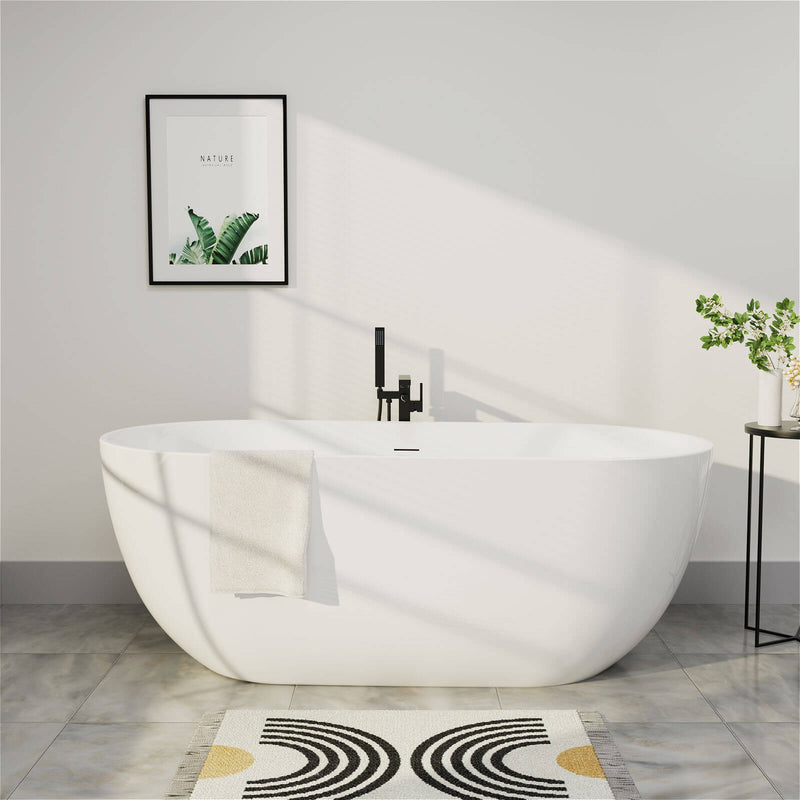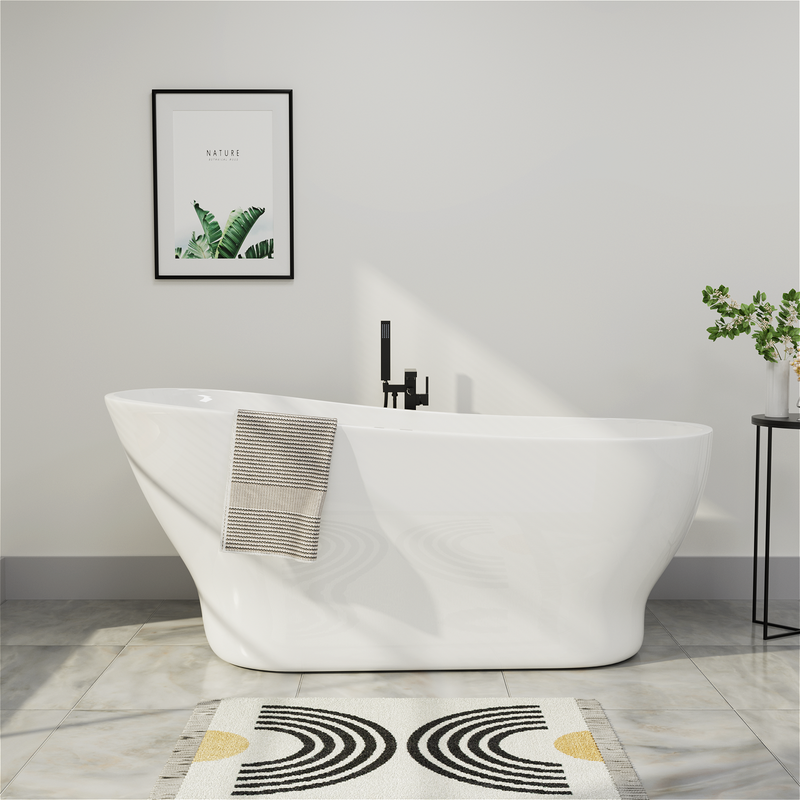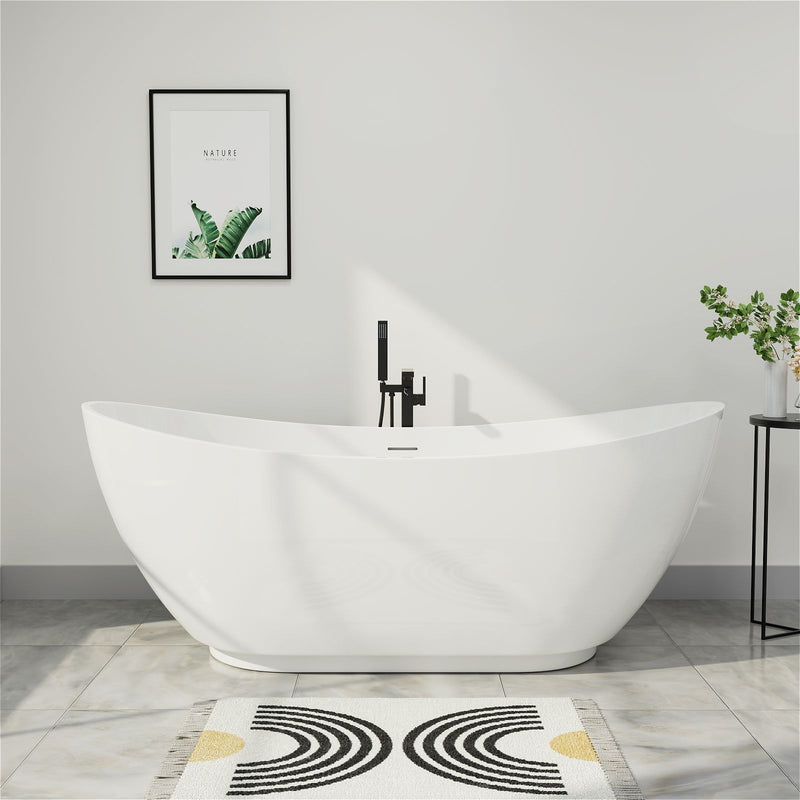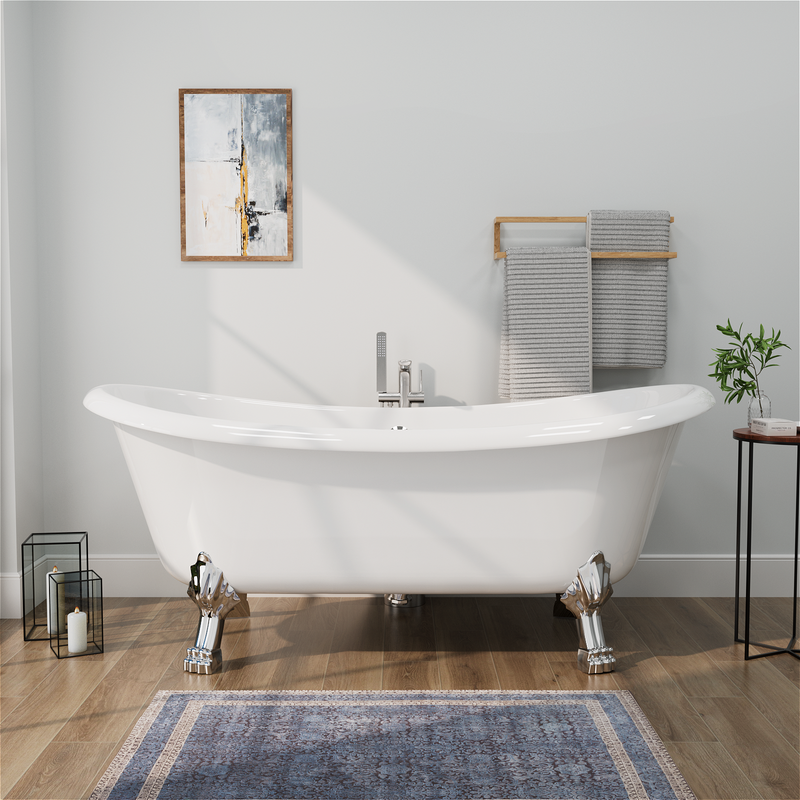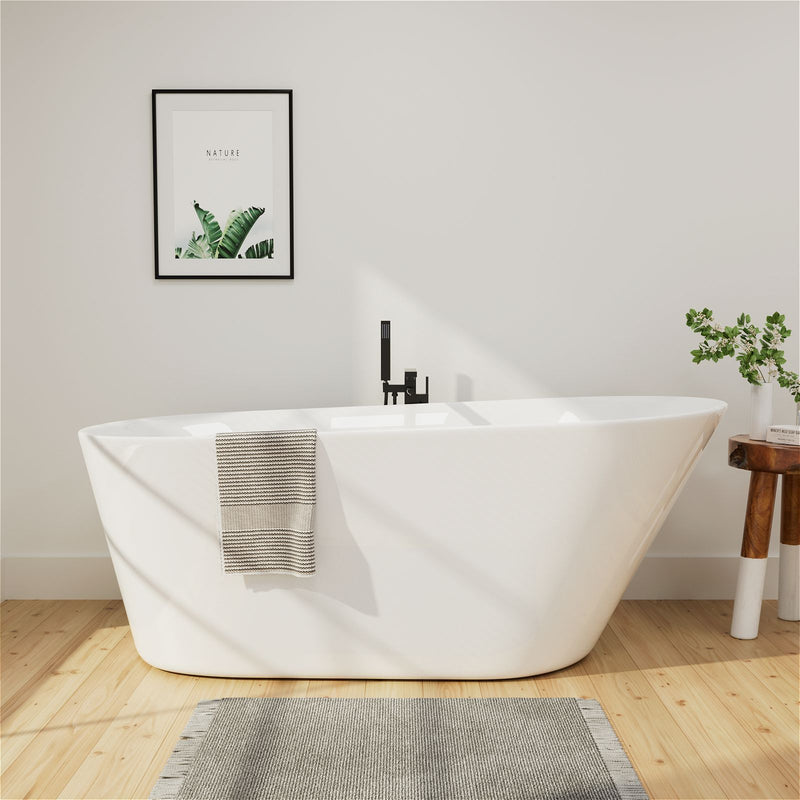When a brand new shower pan nestles into a meticulously tiled wall, the entire bathroom space exudes a clean, sleek aesthetic. However, beneath this visual perfection lies a silent battle: water, a pervasive infiltrator, constantly targets the delicate seam between the shower pan and the tile. This is one of the most vulnerable and critical links in the entire wet area waterproofing system. Properly treated, it becomes a sturdy barrier, protecting the wall structure for decades. However, negligence can lead to nightmares like leaks, mold, and wall peeling, resulting in costly repairs and health risks.

Edge sealing is more than a simple application of glue. It's a delicate art that blends material science, construction techniques, and meticulous attention to detail. This article will delve into the core principles, key steps, material selection, and pitfalls of edge sealing for tile-wall shower pans, revealing the key to creating a watertight, long-lasting shower space.
Causes of Sealing Failure
Before addressing cracks, it's important to understand how water "breaks" through defenses and the key elements of building a strong defense.
Water Entry Paths: Why Do Cracks Fail?
- Capillary Action: Water can creep upward or outward through extremely small cracks (even invisible to the naked eye) and penetrate. Even seemingly tight surfaces can still penetrate without an effective sealing barrier.
- Hydraulic Pressure Penetration: When showering, the impact of water on walls and floors, as well as the accumulation of water, creates static and dynamic hydrostatic pressure on cracks, forcing water to penetrate through any possible weak points.
- Displacement Stress Failure: Micro-settlement of building structures, thermal expansion and contraction (different expansion coefficients of tiles, shower trays, and wall materials), and vibrations from use can all cause small but continuous displacements in joints. Rigid sealing materials cannot accommodate this displacement, making them prone to cracking and failure.
- Adhesion Failure: The sealant and substrate (tile sides, shower pan edges) are not firmly bonded, or the bond interface delaminates due to dirt, moisture, or oil on the substrate, creating a water seepage channel.
Four Key Factors for Successful Sealing
- A Clean and Dry Substrate: This is the lifeline of the bond. Any dust, oil, water stains, or loose objects will act as a barrier, preventing the sealant from truly bonding to the substrate.
- Matching Material Selection: It is essential to choose a specialized sealant (primarily high-quality silicone) that offers high elasticity, long-lasting adhesion, and excellent water and mildew resistance. Ordinary caulk or inferior glue will be a disaster in this situation.
- Precise Gap Design: The gap width and depth must be appropriate to provide the sealant with ample "working space" to effectively fill the gap while also withstanding movement and deformation.
- Professional Construction Techniques: The performance of the material ultimately depends on standardized construction. From caulking technique to joint forming, every step is crucial.
Substrate Preparation and Joint Forming
Precision work begins with the smallest detail. 70% of a perfect seal depends on the quality of the initial preparation.
Surface Cleaning
Deep Dust Removal: Use a stiff-bristle brush or vacuum cleaner to thoroughly remove all construction dust, cement mortar particles, and debris from the sides of the tiles and the grooves around the shower flange. These are the biggest deterrents to adhesion.
Stubborn Stains Removal
- Oil/Release Agent: Shower pan edges (especially those made of plastic or acrylic) may contain residual release agent, and tile surfaces may contain fingerprints and oil stains. Wipe thoroughly with isopropyl alcohol (IPA) or a specialized substrate cleaner to ensure complete removal of any oily residue. Do not use oil-based solvents (such as rosin or gasoline).
- Scale/Chalky: If there are water stains or chalky cement, use a white vinegar solution (1:4 water) or a mild acidic cleaner. Rinse thoroughly with clean water and allow to dry thoroughly.
Key: After cleaning, always wipe again with a clean, dry, lint-free microfiber cloth to confirm that the surface is "touch-free." Clean at least 2-3 cm beyond the edge of the area to be glued.
Drying of the Substrate
- Wait Adequately: After cleaning and any process involving water contact (such as post-tile water curing and shower pan testing), the substrate must be completely and thoroughly dry. Excessive internal moisture content can lead to adhesive failure, bubbling, and mold later in the process.
- Testing Criteria: Visually inspect for any water marks or moisture. After a period of storage in a confined space, inspect the edges of the tiles and shower pan for signs of moisture. Ideally, allow at least 24-48 hours of drying time (depending on ambient humidity and temperature).
Gap Inspection and Treatment
- Ideal Gap Width: A uniform gap of 3mm to 8mm should be maintained between the edge of the shower pan and the tiled wall. Too narrow (<3mm) will result in a thin adhesive layer, poor elastic deformation, and easy tearing. Too wide (>8mm) will require a large amount of adhesive, resulting in slow curing deep inside, increased risk of shrinkage, and reduced aesthetics.
- Gap Depth: Ensure the gap is deep enough to accommodate the adhesive. Ideally, the cross-section of the adhesive should be semicircular or slightly wider than a U-shape (width:depth ratio ≈ 2:1). For example, for a 6mm wide joint, the center thickness after adhesive caulking should be approximately 3mm. Avoid thin-sheet caulking.

Addressing Unsatisfactory Gaps
- If the Gap is too Small: Carefully use a small cutting tool (such as a thin-sheet grinder or a dedicated caulking blade) to widen the gap, taking care to avoid damaging the tile glaze and the shower tray edge. Use gentle, slow, and steady movements.
- If the Gap is too Large or Uneven: This is acceptable if it does not affect the structure and the shower tray is securely installed. Ensure that the caulking is fully filled. If the excessive gap is caused by improper installation, address the installation issue first.
- If There are Holes or Gaps: Pre-fill large holes or gaps with waterproof caulk or repair paste. Allow it to completely cure and dry before applying sealant. Sealant should not be used to fill large holes.
- Remove Loose Objects: Inspect the gaps and edges for loose tile fragments, cement blocks, etc., and remove them completely.
Masking Tape
Purpose: Applying masking tape (masking tape) to the tile and shower pan surfaces (not the areas being glued) ensures neat and straight edges, prevents glue from contaminating hard-to-clean glaze and acrylic surfaces, and facilitates subsequent caulking.
Key Tips for Application
- Choose high-quality masking tape with medium tack and an appropriate width (e.g., 15mm-25mm).
- Apply closely to the edges of the caulking, ensuring a straight edge. You may overlap or carefully trim the tape at corners.
- Apply to both the tile and shower pan sides, approximately 1-2mm from the edge of the caulking (to allow space for the caulking tool and ensure adequate contact between the glue and the substrate).
- After application, compact the sealant by hand or with a scraper to ensure no warping or bubbles.
Selecting and Using Sealing Materials
Materials are the soldiers, and construction is the commander. Choosing and using the right sealing material is the key to success.
High-Quality Mildew-Resistant Silicone Sealant
Why Must Silicone be Used?
- Extraordinary Elasticity: Absorbs displacement stress (up to 200%-400% elongation) between the shower tray and tile caused by thermal expansion and contraction, settling, and foot traffic, without cracking and maintaining a tight seal. This is something rigid materials (epoxy and cement-based caulking) simply cannot achieve.
- Long-lasting Adhesion: Provides excellent long-term adhesion to tiles (glazed and ceramic), common shower tray materials (acrylic, artificial stone, ceramic, metal flanges), and cement substrates.
- Excellent Water Resistance: Non-absorbent, ensuring stable performance even after long-term immersion.
- Key Purchasing Criteria: If marked "kitchen and bathroom mildew-resistant," a high-efficiency mildew inhibitor must be added to significantly slow mildew growth. Ordinary silicone will quickly turn black in this condition.
- Neutral Curing: Neutral substances (usually alcohols) are released during the curing process, resulting in no corrosion to the substrate (especially metal flanges) and no odor. Acidic adhesives are strictly prohibited!
- High-modulus or Modified Silane (MS) Adhesive: High-modulus silicone adhesive offers higher bond strength and greater resistance to displacement. MS adhesive offers superior environmental performance, adhesion, and weather resistance, without the risk of silicone oil leakage and contamination.
- Reputable and Reliable Brands/Channels: Ensure consistent product quality and performance. Inferior adhesives are prone to cracking, debonding, and mildew resistance.
Gluing and Caulking
Tool Preparation
- A High-quality Glue Gun: Apply with steady and even force to avoid sudden changes in speed that can lead to uneven bead thickness or breakage.
- A Sharp Bevel Knife: Cut the nozzle at a 45-degree angle, adjusting the opening size to the gap width (usually slightly smaller than the gap width).
- Professional Caulking Tools: An appropriately sized round caulking ball or a specialized plastic or metal scraper is recommended. Finger caulking is difficult to achieve and can easily contaminate.
- A Spray Bottle Filled with Soapy Water: Used for lubricating caulking tools (to prevent sticking) and cleaning.
Gluing Procedure
- Cut the nozzle and insert it into the glue gun, discharging any unmixed adhesive from the front.
- Hold the glue nozzle at a 45-degree angle to the gap, with the nozzle opening always facing the direction of application and slightly protruding into the gap.
- Move the glue gun at a steady, continuous, and even speed (not rapid), using the force of the gun to fully and thoroughly force the glue deep into the gap. Ensure the glue completely fills the bottom of the gap, avoiding surface coverage and creating "cavities" or "bridges."
- Try to complete the entire edge in one continuous stroke to minimize joints. At joints, allow the new glue to slightly overlap the existing glue.
Crimping and Shaping the Joint (Important!)
- Immediately after applying the glue (before a skin forms on the surface of the glue).
- Spray a small amount of soapy water on the caulking tool (caulking ball or scraper) to lubricate it.
- Press the tool firmly against both substrates (tile and shower pan) and, with moderate, even pressure, apply a single, smooth stroke along the direction of the gap.
Purpose: To ensure full and intimate contact between the glue and both substrates (to expel air bubbles) and form a concave, smooth, continuous curved cross-section (like a smile curve). The concave design helps distribute stress, reducing water accumulation and dirt accumulation.
After caulking, inspect the surface of the adhesive strip for a smooth surface, free of holes, cracks, or tool sticking. If any defects or contamination are found, immediately repair them with a finger or tool dampened in soapy water (only before the surface has dried).
Corner Treatment: When applying adhesive to corners, turn the nozzle appropriately to ensure a continuous adhesive flow. When caulking, ensure smooth transitions with the caulking tool at corners to avoid accumulation at right angles or thinning.
Post-Cleaning and Curing
- Removing the Masking Tape: After caulking, carefully remove the tape immediately (while the adhesive is still wet). Tear away slowly, toward the adhesive, at an angle of approximately 135 degrees, ensuring a clean, sharp edge. Never wait for the adhesive to completely dry before removing it!
- Cleaning and Correction: Use a finger dampened in soapy water, a damp cotton swab, or a special scraper (before it has cured) to very carefully remove any small amounts of adhesive that may have accidentally landed on the tile or shower pan. Large-scale contamination is difficult to clean and can easily damage the surface.
- Curing Environment: Maintain good ventilation in the application area, but avoid strong winds (which may cause surface cracking). The ambient temperature and humidity should meet the adhesive's curing requirements (typically 5°C-40°C, 40%-80% humidity).
- Curing Time: Surface drying (crusting) of the silicone typically takes tens of minutes to several hours, but full curing (achieving optimal physical properties) requires 24-72 hours (affected by temperature, humidity, and adhesive layer thickness). Absolutely avoid contact with water, moisture, or cleaning before the adhesive is fully cured!
Common Mistakes and Solutions
Understanding the causes of failure is more important than knowing how to succeed.

Material Selection Errors
- Mistake: Using common caulk (cement-based, epoxy resin), silicone sealant, low-quality acidic silicone, or non-mold-resistant adhesive for kitchen and bathroom applications.
- Consequences: Cracking, debonding, rapid mold and blackening, corrosion of shower tray hardware, and complete waterproofing failure.
- Solution: Consistently use a high-quality, neutral, mold-resistant silicone sealant.
Perfunctory Surface Preparation
- Errors: Incomplete cleaning (dust, oil, water stains), insufficient drying of the surface, loose objects or large untreated holes in the seams.
- Consequences: Extremely poor adhesion, easy debonding, and the formation of water seepage channels.
- Avoidance: Strictly follow the cleaning, drying, and seam inspection and treatment procedures to ensure "absolute cleanliness and absolute dryness."
Poor Construction Techniques
- Errors: Glue applied too thinly (not completely filling the seams), intermittent caulking with bubbles/cavities, failure to use a caulking tool (relying on a caulking nozzle or applying it casually with fingers), inadequate caulking (failure to form a concave cross-section, resulting in poor contact between the caulking tool and the substrate), poor lubrication of the caulking tool, resulting in adhesion and damage to the caulking surface, and caulking too late (caulking has formed).
- Consequences: Intermittent sealing, water seepage points, stress concentrations that can easily cause tearing, unsightly appearance, and the ability to harbor dirt and grime.
- Avoidance: Use professional tools and master the key techniques of applying caulking at a consistent speed and timely and standardized caulking. Practice makes perfect.
Improper Masking Tape Application
- Errors: Not applying masking tape, applying tape unevenly or with warped edges, applying masking tape too close or too far from the edge of the joint, or waiting until the adhesive is completely dry before removing the tape.
- Consequences: Contamination of the substrate, uneven edges, and damage to the sealant during removal.
- Avoidance: Apply the tape properly, ensuring neat edges, and remove the tape immediately after caulking.
Ignoring the Curing Period
- Error: Testing the water, cleaning, or using the shower enclosure shortly after applying the adhesive.
- Consequences: Uncured adhesive can be washed away by water, swelling and deformation can occur, causing bond failure and permanent damage to the sealant.
- Avoidance: Strictly adhere to the curing time (keep out of water for at least 24 hours) and patiently wait for full curing.
Conclusion
The joint between the tile wall and the edge of the shower tray is the "Maginot Line" that protects your home from flooding. Its success or failure lies not in its grand structure but in the meticulous craftsmanship that determines every detail. Understand the properties of water, respect the power of displacement, choose a flexible guard (high-quality mildew-resistant silicone), and be almost obsessive about ensuring the base surface is clean and dry, and every inch of the silicone is plump, dense, and smooth - this is the ultimate secret to edge sealing.
Remember:
- Cleanliness and dryness are the cornerstones of bonding; no compromise is allowed.
- Mold-resistant silicone is the only choice; elasticity is the lifeline to resist displacement.
- Proper construction guarantees performance; full application of sealant, proper caulking, and timely paper removal are all essential.
- Patiently waiting for curing is the final test; rushing for results will only lead to future problems.
When you complete this delicate seal with meticulous craftsmanship, it becomes more than just a gap. It becomes an invisible barrier, silently withstanding the impact of water and the passage of time, protecting the wall's dryness and the tranquility of the home. This dedication to detail is the wisdom and commitment that creates a timeless, healthy, and worry-free shower space.

